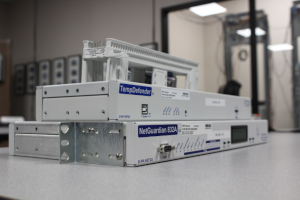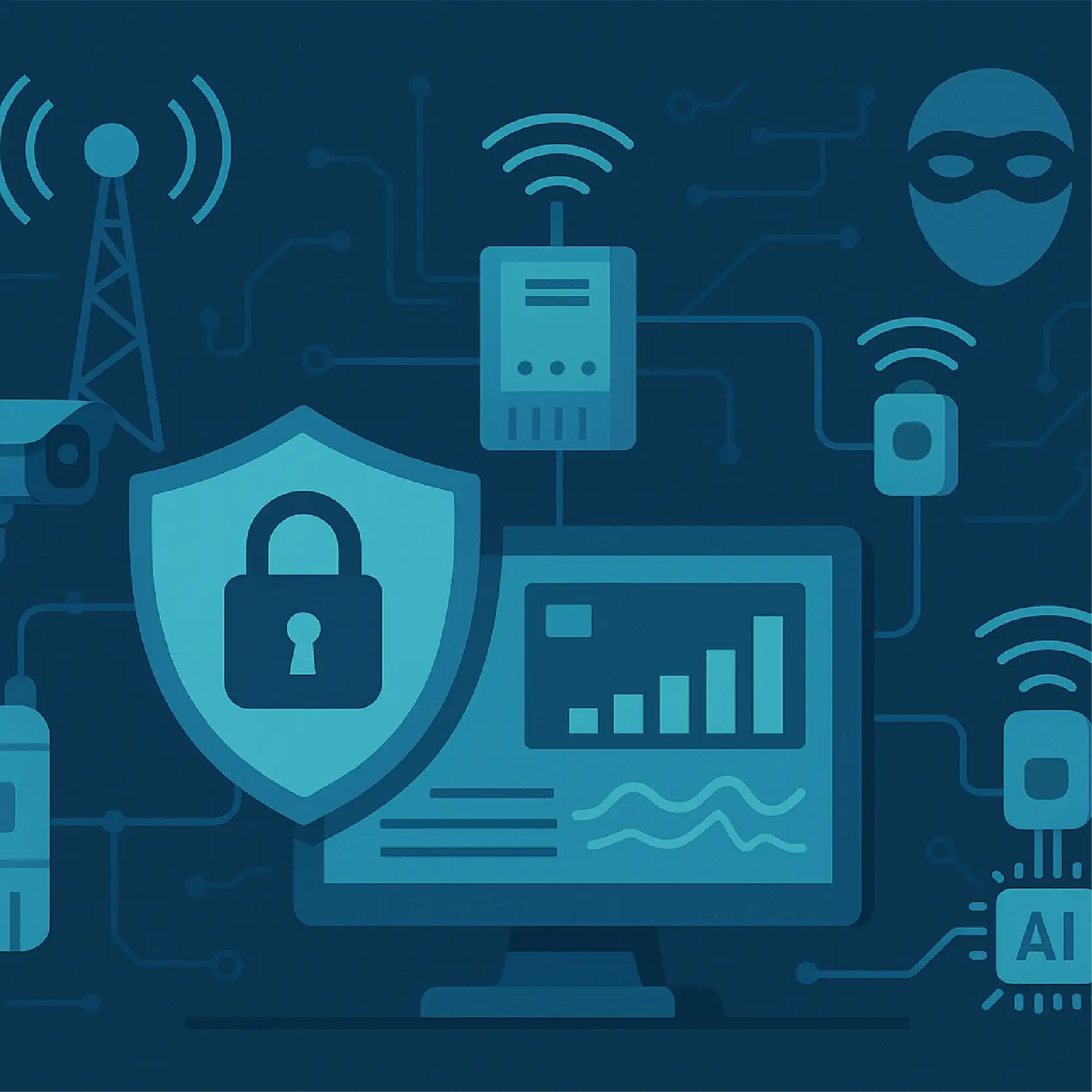Check out our White Paper Series!
A complete library of helpful advice and survival guides for every aspect of system monitoring and control.
1-800-693-0351
Have a specific question? Ask our team of expert engineers and get a specific answer!
Sign up for the next DPS Factory Training!

Whether you're new to our equipment or you've used it for years, DPS factory training is the best way to get more from your monitoring.
Reserve Your Seat TodayThe ways we monitor, manage, and protect data are changing. The technology you use to watch over your remote sites now sits at the crossroads of two increasing concerns: cybersecurity and data privacy.
And the National Institute of Standards and Technology (NIST) just made a significant move to address that.
In April 2025, NIST released a draft update to the NIST Privacy Framework (PFW). That's a document that was originally created to help organizations manage privacy risk in the digital age. While this update might seem small on the surface, it's actually a big opportunity for teams managing critical infrastructure.
This is your chance to bring your network monitoring in line with modern privacy expectations - and set yourself up for long-term success.

If you're managing a network of remote sites, you're probably already thinking about security concerns like firewall settings, encrypted SNMP, VPN access, and so on.
But here's what you may not realize:
You are also handling sensitive data that presents real privacy risks. And it's not just about customer databases or financial records.
A few examples of privacy risk in monitoring environments include:
You might not call that "personal data" - but under modern frameworks, including GDPR, CCPA, and NIST's own guidance, any data that could be linked to an individual may qualify.
The original NIST Privacy Framework launched in 2020 as a voluntary tool to help organizations "engineer in" privacy protections from the start. Now, five years later, PFW 1.1 has arrived. It brings a more modern approach.
Most importantly, the update was designed to sync with NIST's Cybersecurity Framework 2.0 (CSF 2.0) - which got its own refresh in 2024. The two frameworks now share a common structure and terminology. This makes it easier than ever to manage both cybersecurity and privacy risk together.
Let's break down the key changes that affect you:
The "Core" structure is where NIST outlines the specific functions, categories, and subcategories of effective risk management. With this update, PFW 1.1 uses the same top-level structure as CSF 2.0:
Identify, Protect, Detect, Respond, and Recover.
This alignment means you no longer have to build separate, parallel risk programs. You can use one shared foundation for privacy and cybersecurity, consolidating your work.
The Govern and Protect functions get new attention in this version. That includes how you define privacy roles, implement protection, and align with policies or regulations.
If you're already managing cybersecurity policies, this is a good time to add in privacy-specific processes (like access restrictions, logging policies, and AI risk evaluations).
This is a big one. Section 1.2.2 of the draft discusses how AI systems interact with privacy - and how you can manage AI privacy risks using PFW 1.1.
This matters because more people are deploying AI-powered tools: intelligent HVAC control, predictive failure alerts, automated maintenance dispatching, and more. Since many of these systems depend on monitoring human behavior, that makes privacy a concern.
NIST has moved its usage section to the web, giving you access to interactive FAQs and tutorials. This is helpful, but it also means the bar is now higher. This change suggests that NIST now expects you to stay current with updates and improvements to the framework.
The challenge is that most network monitoring setups weren't built with privacy in mind. They were designed to detect outages, track SNMP traps, and send alerts to a central server.
But now, there are three major weaknesses in legacy monitoring approaches:
Older monitoring protocols like SNMPv1 or Telnet send data in plaintext. That leaves you open to interception. You also might lack fine-grained user control (ex. anyone with access sees everything).
Either (or both!) of these create a serious privacy liability.
Some gear (like microwave radios, routers, or PBXs) comes with built-in alarm reporting features. These might sound convenient, but they're typically:
Many times, integrated monitoring functions can't be configured to store logs securely or limit access by user role.
Modern systems are starting to use AI and automation to reduce downtime, streamline maintenance, and monitor patterns. Systems with "built-in monitoring" aren't typically at the cutting edge of this sort of tech.
Think about your working reality if all of the following were true:
This is the future that NIST is pointing toward - and it's one you can start building today with the right equipment.
At DPS Telecom, we've been creating remote monitoring gear for over 35 years. Our focus has been on data security, reliability, and transparency.
As privacy becomes more important than ever, our gear is uniquely positioned to help you meet the goals of PFW 1.1.
All modern DPS RTUs support SNMPv3, the version that encrypts your alarm traffic. This is critical if any alarm payloads include sensitive data (like usernames, personnel activity, or remote access info).
NetGuardian RTUs and T/Mon master stations allow you to define individual users with granular permissions. This helps you meet the "Protect" function of the PFW, making sure that only authorized people can see sensitive data.
You can log every system interaction including alarm acknowledgments, user logins, config changes, and more. This supports the Detect and Respond functions of both CSF and PFW.
Using the HTTPS web interfaces and secure authentication, your technicians can safely manage remote gear without opening privacy vulnerabilities.
Let's take a practical example: managing HVAC units at remote sites.
Using the G6 HVAC Controller from DPS, you can:
Now imagine this data includes usage logs and tech overrides. If someone wants to know "who turned the cooling up during last Friday's visit?" - you've got it. You've also restricted access to only your HVAC team.
That's privacy and operational efficiency in one package. And it's exactly what PFW 1.1 encourages you to do.
Whether you're regulated or not, adopting NIST frameworks is a smart move. They offer a clear roadmap to reduce risk and modernize your systems.
Here's what you can do next:
You can read the full draft on NIST's website. It's free and packed with practical guidance.
We'll help you identify areas where your gear might be lagging and show you how to upgrade for both privacy and performance.
You don't need to rebuild your infrastructure, but you do need a plan. And we can help you build one.
At DPS Telecom, we live and breathe secure monitoring. We design, manufacture, and support our gear from our California HQ - and we've worked with everyone from national telcos to federal agencies.
If you're thinking about privacy, cybersecurity, and uptime, we're ready to help you.
Call me at 559-454-1600
Or email: sales@dpstele.com

Andrew Erickson
Andrew Erickson is an Application Engineer at DPS Telecom, a manufacturer of semi-custom remote alarm monitoring systems based in Fresno, California. Andrew brings more than 19 years of experience building site monitoring solutions, developing intuitive user interfaces and documentation, and opt...